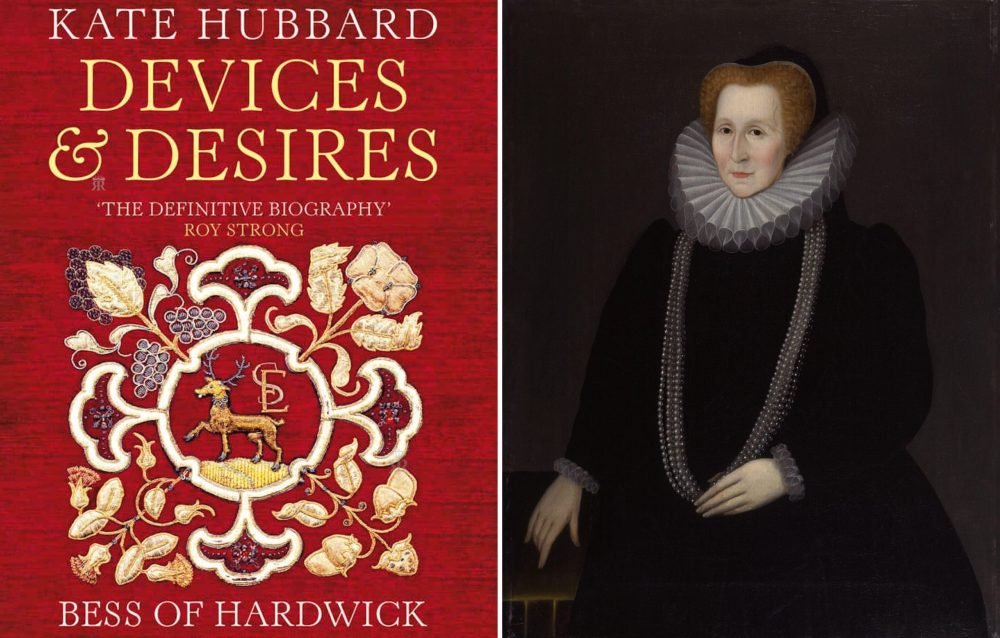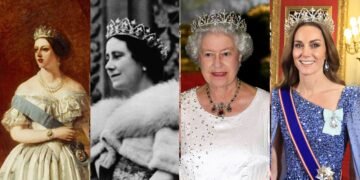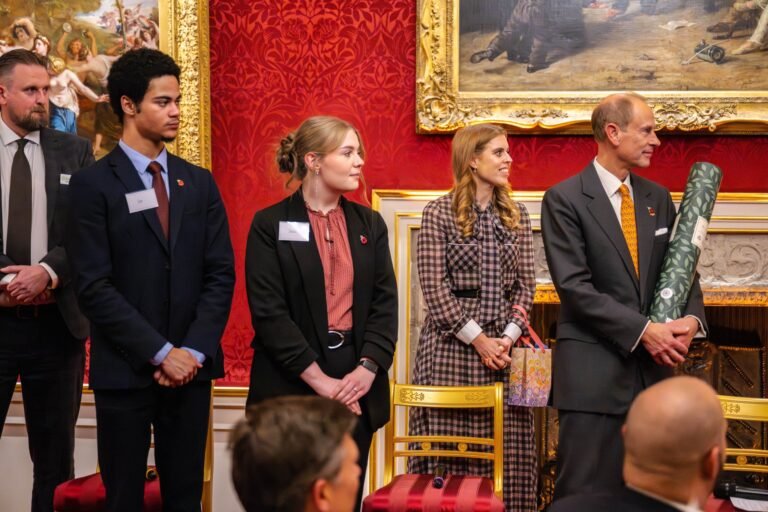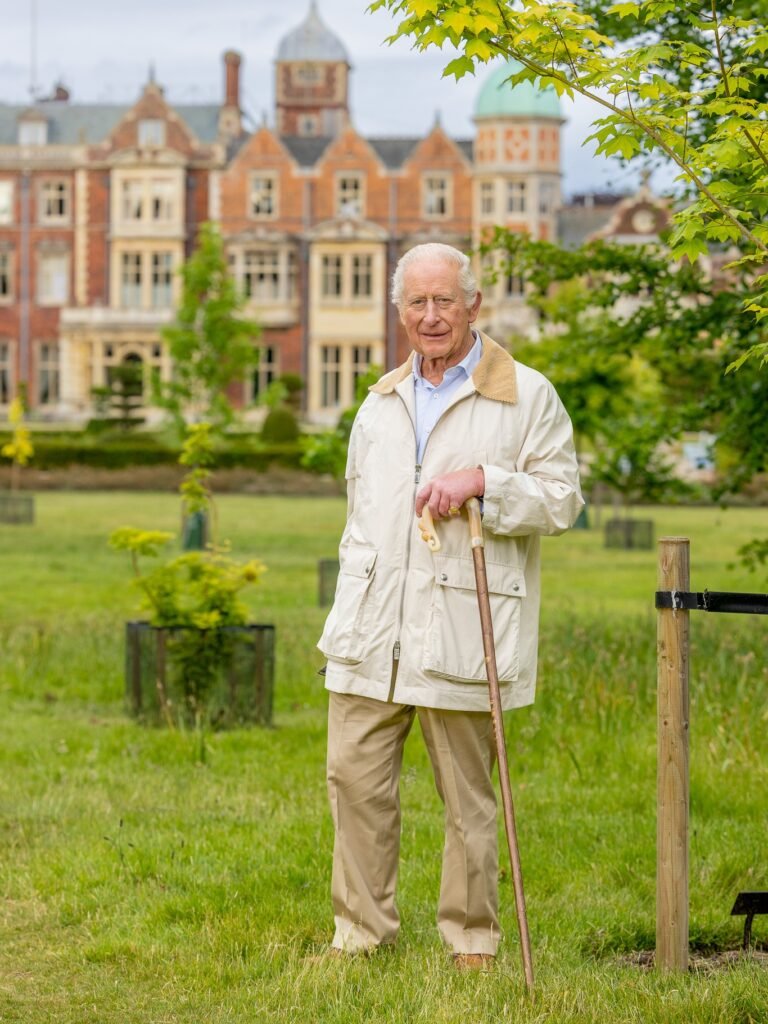What makes a feminist? In my view, a feminist is someone who knows her rights and isn’t afraid to fight for them, regardless of societal pushback. A feminist looks out for herself, her family, and her money. A feminist works to change her circumstances if they don’t suit her and doesn’t look back. By this definition, Bess of Hardwick was a feminist – just not in our century.
Devices and Desires: Bess of Hardwick and the Building of Elizabethan England
By Kate Hubbard
Multi-faceted Bess of Hardwick had an impact on more than just British architecture – Kate Hubbard shows us how in ‘Devices and Desires’
★★★ star rating
Some of you may be familiar with Bess of Hardwick as the wife of the Earl of Shrewsbury and companion of Mary, Queen of Scots, during the queen’s lengthy stay with the couple; you might have come across Bess while reading about Elizabeth I’s court – given her position as a Countess, Bess knew Elizabeth for many years and was arguably the second-most powerful woman in the country. Others may know her as the builder of Old Cotes, Hardwick Hall, and the original Chatsworth House.

Author Kate Hubbard uses this last fact as the basis for Devices and Desires, and it is, for this reason, I strongly recommend you pick up this book. Ms. Hubbard not only proves Bess of Hardwick’s status as a successful builder and businesswoman, but indirectly makes the case for Bess as a 16th century feminist.
Although the date of Bess’s birth is uncertain (some scholars put it as late as 1527, while others suggest 1521 or 1522) her parents were minor member of the local gentry and her father, John of Hardwick, was a successful farmer and Bess had five siblings. Unfortunately, but not unusually, John died in 1528, leaving his widow with six young children to feed, clothe, and educate. Prior to his death John tried to use the law to settle his estate and avoid wardship for James, the Hardwick heir while establishing small dowries for each of his daughters. This will-esque document was found to be illegal after John’s death, however, and Elizabeth, Bess’s mother, remarried in 1529, to secure her circumstances.

Her mother’s remarriage meant Bess was able to spend her youth at Hardwick Hall. Finances remained a struggle, and around 1542, Bess married for the first time after her stepfather was imprisoned for debt. Bess’s new husband, Robert Barley (or Barlow), was roughly 12 years old. Like many marriages before and after, theirs was based on money and property. Love, it seems, had nothing to do with it.
Bess was a widow within two years. The Barley family refused to honour the marriage contract and would not pay Bess her widow’s jointure. So, as any woman in living in the 21st century would do, Bess took the Barleys to court. And she won.
This set the stage for the rest of Bess’s life. She would marry three more times and be widowed three more times; each subsequent spouse was a man of means, and while most were married for business reasons, Sir William Cavendish, Bess’s second husband, was a love match. Each time Bess was widowed, her financial and property portfolios grew. If anyone challenged her rights, Bess fought in court until she received what she was due.
Bess’s building career began in earnest during her second marriage. Hubbard excels at placing Bess’s progress within the larger historical context of Tudor and Elizabethan England; the reader can easily understand Bess’s accomplishments when placed alongside those of Henry VIII, Elizabeth I, William Cecil, and other members of the nobility. And even if one’s eyes skim the paragraphs detailing the composition of walls and loggias and other architectural specifics, Hubbards writing is crisp and engaging and not without humour.

One more element of Hubbard’s book is worth mentioning: Bess married her fourth and final husband, George Talbot, Earl of Shrewsbury, in 1567. In 1569 Queen Elizabeth gave the Shrewsburys custody of Mary, Queen of Scots. As other historians note, this arrangement decimated the Earl’s physical and mental health as well as his finances. The author documents in detail the effect this arrangement had on the Shrewsbury marriage through the triple lenses of emotional distress, money, and property. Bess proves herself – again – to be a fighter in every sense of the word, even when it comes to maintaining a marriage destroyed by factors both internal and external.
If Bess were alive today it is easy to imagine her at home in the City managing a billion-pound hedge fund, wheeling and dealing on her mobile whilst visiting a building site and reviewing blueprints and fabric samples. Devices and Desires honours a woman who, thanks to her business, legal, and financial acumen, deserves to be remembered as one of England’s early feminists.









